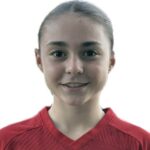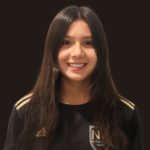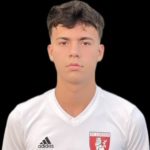Grassroots change: De Anza Force building Development Academy, ECNL programs from bottom up
CUPERTINO, Calif. – De Anza Force, one of the premier youth soccer clubs in the San Francisco Bay Area, hasn’t always had to worry about identifying young talent. As recently as 2011, the Force could still rely on a steady pipeline of the Bay Area’s finest prospects to fill its youth teams.
But it wasn’t long before the club’s coaching staff recognized that many of the players entering their academy system at eleven and twelve years-old were significantly lacking in their early soccer development. These young players simply weren’t prepared technically, putting them behind from the start of learning tactics, and the coaches found themselves spending considerable time and energy trying to integrate the young players into the club’s system.
According to Jeff Baicher, the Force Director of Coaching, the club is now trying to change the old system from the bottom up. “What we’ve done is partnered with local clubs in the Bay Area,” Baicher told SoccerWire. “Instead of recruiting and going and taking players at eleven and twelve years-old, what we’ve done is created these alliances where we help the clubs with things like curriculum, coaching development, [and] opportunities for elite-level players, even at the younger ages, to train with our elite teams.”
+READ: MLS youth development from age 10? That’s the plan, say LA Galaxy
Young players in these alliance clubs learn the De Anza Force system early and stay with their local club teams until they are ready for Development Academy or Elite Clubs National League (ECNL) play, at which time they’ll transfer to the Force.
“We have a pretty unique curriculum in our club,” Baicher said. “It takes a lot of time to work these kids into that. That‘s why we started all this focus on the younger ages.”
Once the players reach the Academy level, they are in for one of the most rigorous and challenging development programs on the West Coast. The Force wants its players to develop a complete understanding of their positions by the time they graduate. “We have a curriculum that goes from five to eighteen and focuses on all years and all parts of the game,” Baicher said. “When a player leaves our club at eighteen years-old and they’re a left back, [they will know] the twenty or thirty things a left back should [know].”
In years past, such a rigorous curriculum would have been almost impossible to implement, but thanks to several major changes from U.S. Soccer, this has all changed.
Baicher explained the dilemma: “[High school players] would leave, they would go away for three months, they would come back and it would take us a month to pull them back to even close to where they were when they left.”
U.S. Soccer, by mandating a ten-month Development Academy season and by banning high school play, effectively solved this problem for De Anza Force on the boys side. The year-round training and lack of high school play ensure that the club teams can monitor their players’ development without the interference of other coaching or the influence of other playing styles.
In other words, working under the auspices of U.S. Soccer has freed De Anza Force to devote itself solely to its young players. “Allowing us to focus on player development without being so worried about results has really helped us,” Baicher said. “We’re going to play the way our club wants to play, and if we lose games in doing that but we develop a more efficient player and a more efficient club [where] a kid can go to Liverpool and play at seventeen years-old, that’s a huge benefit for us.”
Yet Baicher believes that there’s not enough focus, from U.S. Soccer or from parents, on the youngest soccer players. “The misconception is that a 5, 6, 7, 8 year-old player, as long as they’re in soccer and in some sort of league where they get to practice maybe once a week and get to play in the game, that’s a good start.”
This, he explains, is just not enough.
“There should be a tremendous amount of focus on everything with the ball but also everything with coordination and speed and agility and balance and psycho-motor training so that when the kids get to nine and ten, they’re not uncomfortable with their own bodies and the technical part [that] comes along with it,” Baicher said.
To fulfill these ambitions, especially for its youngest players, De Anza Force is partnering with Adidas USA and is negotiating partnerships with several European clubs. These partnerships, along with its local alliances, are helping De Anza Force put in place a grassroots framework for the kind of total overhaul of the American development system that U.S. Soccer has been promising for decades. While the changes thus far have been small, real top-to-bottom change may be just a few cycles away – one local club at a time.











